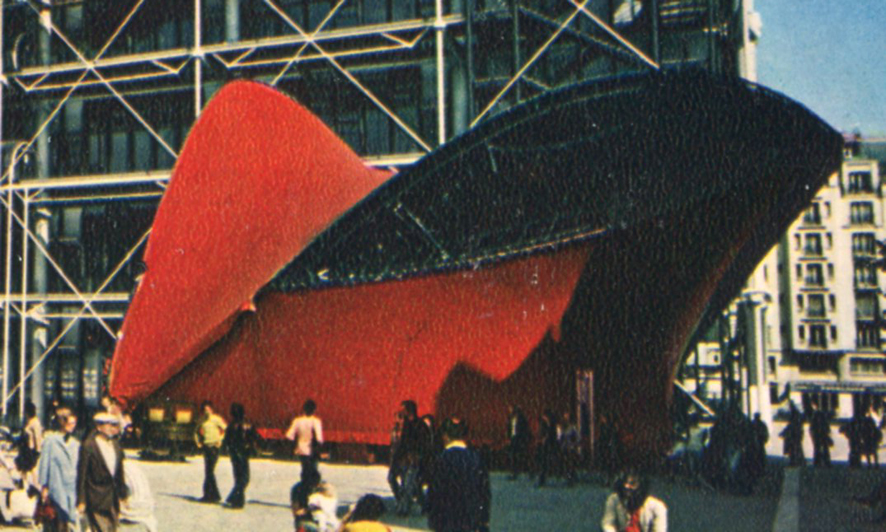For the inauguration of the Georges Pompidou Center in 1978, its president Robert Bordaz commissioned Xenakis to create a new Polytope. The ambitions of the composer are huge: he wants to link the monuments of Paris and the new center by an immense network of lasers by diffusing music by the warning sirens of the city of Paris. The latter, without surprise, refuses… Then, he proposes to immerse the facade of the new center as well as the adjoining buildings with sounds and lights. He then proposed a gigantic spider’s web made of metallic cables, covered with electronic flashes. Faced with technical, sociological and psychological refusals, he finally proposed an autonomous pavilion, which could travel around the world, as an ambassador of the Pompidou Center and which would bear the name of Diatope. The latter is inspired by the Philips Pavilion; its shell is composed of two steel arches (20 meters high), which support three hyperbolic paraboloids, maintained by a network of steel cables, carrying a translucent red canvas. The floor is made of glass tiles, while six columns inside carry the 4 laser beams and the 400 reflecting and rotating mirrors, necessary to create a dense and luminous show. The 1600 electronic flashes are linked to the cables of the pavilion structure. The music of La Légende d’Eer (7 tracks, 46 minutes) was specially composed for the occasion in the studios of WDR in Cologne and Cemamu in Paris. It is spatialized and spread by 8 loudspeakers placed in the Diatope enclosure. The 3 daily performances of the light and music show are entirely automated. Xenakis, also proposes a set of texts which appear in the brochure of Diatope as arguments of the spectacle: “The Legend of Eer“, of the Republic of Plato, “Poimandrès” allotted to Hermes Trismegistus, “The infinite” of the Pensées of Pascal, “Siebenkäs” of Jean Paul Richter and “Supernova” of Robert Kirschner. In addition to the 10,000 Parisian spectators, there were 25,000 spectators in the city of Bonn, Germany, where the Diatope was installed in May 1979, for six months. An important correspondence of Xenakis with different organizations and countries such as Greece, France, the United States or England shows how much Xenakis wished to make the Diatope travel around the world. But, the cost of reinstallation being prohibitive, the Diatope’s hull and electronic infrastructure will eventually become unusable and destroyed. The music will be the only surviving element of this project. The Legend of Eer is still today one of the masterpieces of electroacoustic music.
Categories
Diatope (Polytope de Beaubourg)

